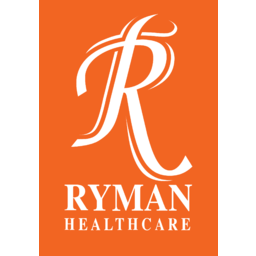
P/E ratio for Ryman Healthcare (RYM.NZ)
P/E ratio at the end of 2023: 10.4
According to Ryman Healthcare's latest financial reports and stock price the company's current price-to-earnings ratio (TTM) is 7.89485. At the end of 2023 the company had a P/E ratio of 10.4.
P/E ratio history for Ryman Healthcare from 2001 to 2023
PE ratio at the end of each year
| Year | P/E ratio | Change |
|---|---|---|
| 2023 | 10.4 | 71.31% |
| 2022 | 6.04 | -62.4% |
| 2021 | 16.1 | -20.78% |
| 2020 | 20.3 | 19.31% |
| 2019 | 17.0 | 43% |
| 2018 | 11.9 | 11.72% |
| 2017 | 10.6 | -15.73% |
| 2016 | 12.6 | -6.39% |
| 2015 | 13.5 | -16.35% |
| 2014 | 16.1 | 16.08% |
| 2013 | 13.9 | 42.49% |
| 2012 | 9.75 | -0.03% |
| 2011 | 9.75 | -16.5% |
| 2010 | 11.7 | -2.77% |
| 2009 | 12.0 | 27.73% |
| 2008 | 9.41 | -57.92% |
| 2007 | 22.4 | 15.77% |
| 2006 | 19.3 | 38.78% |
| 2005 | 13.9 | 27.11% |
| 2004 | 10.9 | 6.42% |
| 2003 | 10.3 | -37.61% |
| 2002 | 16.5 | 13.72% |
| 2001 | 14.5 |
How to read a P/E ratio?
The Price/Earnings ratio measures the relationship between a company's stock price and its earnings per share. A low but positive P/E ratio stands for a company that is generating high earnings compared to its current valuation and might be undervalued. A company with a high negative (near 0) P/E ratio stands for a company that is generating heavy losses compared to its current valuation.
Companies with a P/E ratio over 30 or a negative one are generaly seen as "growth stocks" meaning that investors typically expect the company to grow or to become profitable in the future.
Companies with a positive P/E ratio bellow 10 are generally seen as "value stocks" meaning that the company is already very profitable and unlikely to strong growth in the future.